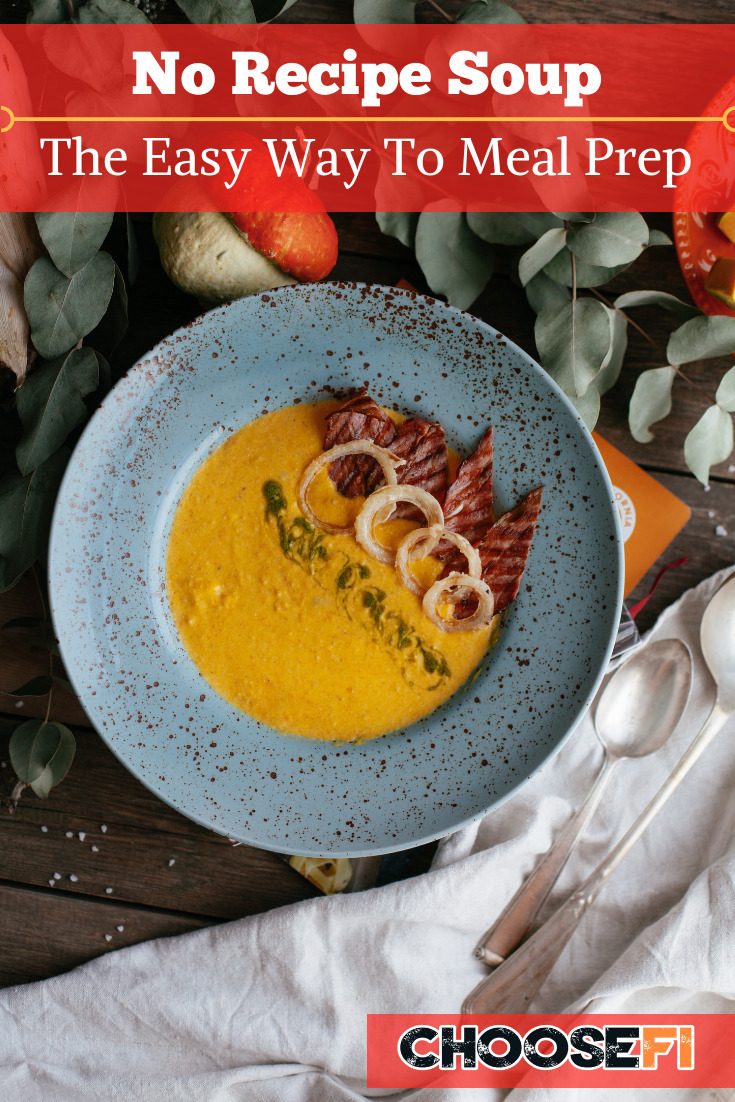Do you like to eat? Yeah, me too. Do you like to slave away in the kitchen every day? Yeah, me neither. This is why I do meal prepping.
I cook and prepare all of my meals on the weekend for the upcoming week. Furthermore, I don’t follow recipes. Why? Because it allows me to be creative and use what is on hand.
The Advantages Of Meal Prepping
The advantages of meal prepping as a life hack are really threefold:
- Keeping food costs low
- Time efficiency
- Healthy eating
By making all my meals, I’m able to keep my cost per meal to approximately $2.62. The time I spend meal prepping is about two to three hours on the weekend.
I eat healthily. I make a batch of smoothies and parcel them into mason jars and freeze for my breakfasts. Additionally, I make a big salad which gets doled out for my lunches. Lastly, I make some type of hearty meal (often soup) which gets divided into individual serving containers and placed in the freezer. This way I can pull out something different each day for a variety.
Things To Keep On Hand
Since I make a vat of soup each week, I’ve learned to keep certain ingredients on hand at all times so I can always whip something together:
- Boullion
- Onions
- Canned diced tomatoes
- Beans
- Quinoa
- Rice
- Pasta
- Barley
- Cans of coconut milk
- Coconut oil
- Olive oil
- Frozen vegetables
- Frozen herbs
Gardening
I currently live in an apartment so there is no gardening going on here. However, I do purchase Consumer Supported Agriculture (CSA) from a local farm. It’s actually a really cool farm called, The Refugee Response. I get to support local agriculture and refugees, as well as enjoy a variety of crops each week in the summer.
With my CSA, I never know what will be harvested each week. When you have your own garden, you can plan what you’ll be planting.
The surprise harvest is one of the reasons I don’t follow recipes. I thoroughly enjoy picking up my crops each week and experimenting with new vegetables.
Related: 12 Ways To Save Money On Groceries
Making Soup
Sure, I make lots of salads but my favorite thing to make with all of these vegetables is soup! Soups are glorious and can be a hearty meal. Moreover, I think it’s fairly easy to throw vegetables into the stock pot and produce a delicious tasting soup.
Unless I’m making a puree, I like my soups to be a thick stew with lots of good stuff.
Related: Creamy Butternut Squash Soup Pomegranate And Arugula
It Always Starts With…
I start all of my soups the same way, by browning an onion. An Italian friend once told me all good recipes start this way, so that’s what I do!
Actually, you can start by browning any of these options:
- Onion–of any kind
- Shallots
- Garlic
- Leeks
If I’m going to be flavoring my soup with coconut milk, I brown the onions in coconut oil. Otherwise, I might use extra virgin olive oil or organic grass fed butter.
While the onion is browning, I cut up my vegetables; this is the most time-consuming part of the process. It is a good idea to separate out the harder vegetables, like carrots, which take longer to cook.
Related: How To Find Cheap Produce
The Base Of The Soup
Once the onion is browned, I add water. I don’t measure it. I just eyeball however many vegetables are cut up and fill the stock pot accordingly. Remember I like my soup thick! When in doubt, start with less water than you think you need. You can always add more.
Next, I add some kind of base. I prefer the brand Better Than Bouillon. As you can see there are all kinds of bases, even vegetarian options. It is recommended to 1 &1/2 tablespoon to one quart of water.
Often times I add canned diced tomatoes. Or if I have a plethora of tomatoes from the garden, I blend them and add them to the soup.
If I have any hot peppers like fresno or thai, I will throw them in this point. I throw them in whole, kind of like a bay leaf, to flavor the soup without overpowering it. It gets discarded at the end.
Protein
If I’m going to add meat to my soup (not often), it will consist of one of the following options.
- Chicken
- Meatballs
- Sausage
I really like my chicken slow cooked in a crockpot for several hours so I’ll do this separately. I cook it in water with herbs. Then add the cooked and shredded chicken at the end.
My meatballs are made up of:
- Organic ground beef or turkey
- Egg
- Ground oatmeal instead of breadcrumbs (you don’t need a lot)
- Salt & pepper
I brown the meatballs before adding to the simmering stockpot. Same with the sausage. I let this simmer for approximately 1/2 hour, longer if using pork sausage.
I often use beans of some kind rather than meat for my protein. If I do this, I soak them and add them early on in the soup cooking process. Occasionally, I use canned beans and these can be thrown in at the end.
Related: 6 Grocery Shopping Apps And Recipe Websites That Will Save You Money
Grains Or Pasta
Sometimes I like to add rice, barley, quinoa, or pasta to my soup. I’ve found with pasta that it soaks up the water and expands. That being said, if I want to add some kind of noodle, it’s better to cook it, keep it separate, and add to the soup before I eat it.
Rice, barley, or quinoa can be added to the soup early on in the process to ensure it is fully cooked. Of course, if you are adding one of these you need to ensure you have enough water as they soak in water during the cooking process.
In all my years of making soups without recipes, I’ve never made a batch that needs to be thrown away. I’ve found if it’s too thick near the end, I can add more liquid. Of course, if it’s too thin, you can always cook more grains on the side and add them.
The Vegetables, Herbs, & Coconut Milk
I throw in the harder vegetables first and let it simmer for approximately 20 minutes.
Next, I throw in the softer vegetables and continue to let it simmer for another 15 minutes or so.
In my former life, I worked at a fine dining restaurant with an amazing chef. I tried to glean as much as I could from him, which wasn’t much because he kept most of his recipes under lock and key. However, when he was in a good mood, I learned those were the times to ask him my questions. He taught me that you always throw in the herbs near the end of the cooking process. Apparently, they are more flavorful that way.
So that’s what I do. I get a lot of fresh herbs in the summer with my CSA so I freeze the extra to have for soup recipes all year long. If I’m adding any dried spices to my soup, I do it about 2/3 of the way in.
The last thing I do is add a can or two of coconut milk. It adds amazing flavor and makes it deliciously creamy.
Final Thoughts
Voila, there you have it–how to meal prep soup without a recipe! You’ll probably have enough ingredients in your freezer and pantry to make some sort of delicious soup right now. Meal prepping is by far my favorite life hack. The more you do it, the better you’ll get at it.
Related Articles
- My Garden: How I Cut My Produce Budget In Half
- My Top 2 Comfort Food Instant Pot Recipes
- My Top 2 Instant Pot Soup Recipes




